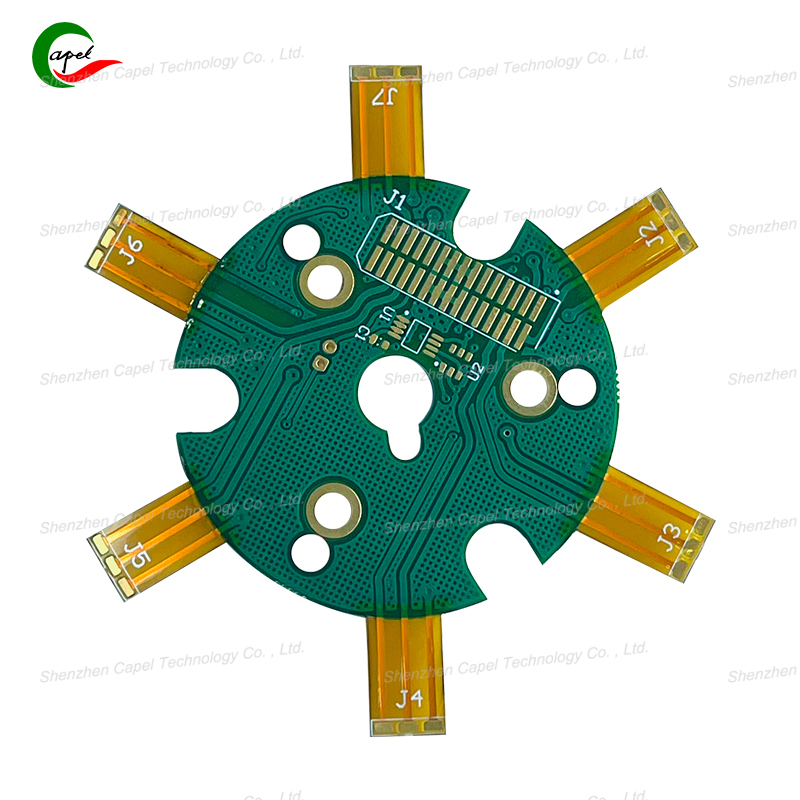Date: 2025-10-10
When we talk about rigid-flex PCBs, the first question that usually comes up is: how do you actually get the rigid and flexible parts to stay connected? I've worked with manufacturers across three continents, and here's what really goes into making these bonds last.
It All Starts with the Right Materials
Let's get one thing straight - we're not using your everyday adhesive here. The backbone of rigid-flex bonding is a specialized thermal-set bonding film that behaves more like a composite material than conventional glue.
These films typically come in thicknesses between 0.05mm and 0.1mm - any thicker and you'd compromise the board's flexibility, any thinner and you risk insufficient bonding. What makes them particularly interesting is their dual-phase nature: they flow during lamination but become permanent once cured.
The Manufacturing Process: Where Precision Meets Practicality
Surface Preparation: The Make-or-Break First Step
I can't emphasize this enough - if you screw up the cleaning process, nothing else matters. We use 99.9% pure isopropyl alcohol in controlled environments because even fingerprint oils can create bonding failures. I once saw an entire production batch fail because someone skipped the plasma treatment step for a high-reliability medical device.
The Alignment Challenge
Getting everything lined up is harder than it looks. Modern facilities use optical recognition systems that can achieve alignment within 25 microns. Why such precision? Because misalignment doesn't just affect connectivity - it creates stress points that will inevitably fail during flexing.
The Lamination Process: Heat, Pressure, and Patience
Here's where the real transformation happens. The typical lamination cycle runs between 180°C and 220°C with pressures of 50-100 PSI, but the magic is in the ramp rates and dwell times. Too fast and you get voids; too slow and the material over-cures.
The vacuum aspect is crucial - we're talking about pulling down to 29 inches of mercury to eliminate any trapped air. I've learned the hard way that even microscopic air pockets become failure points after enough flex cycles.
Cooling: The Forgotten Critical Phase
Most people don't realize that how you cool the assembly matters as much as how you heat it. We use controlled cooling rates of 2-5°C per minute because rapid cooling introduces thermal stresses that can compromise bond integrity.
Why Off-the-Shelf Solutions Fail
People often ask why we can't use simpler adhesives. Here's the reality check:
Conventional super glue becomes brittle and fails thermal cycling tests. Double-sided tape? It has terrible thermal conductivity and creeps under sustained load. Both options fail the basic reliability requirements for anything beyond prototype quantities.
Common Production Issues and How We Solve Them
The Voiding Problem
Even with perfect processes, you'll occasionally get voids in the bond line. The solution usually involves optimizing the vacuum system and adjusting the material's flow characteristics. For critical applications, we use automated X-ray inspection to catch these issues before they reach customers.
Adhesive Flow Control
Getting the flow just right is an art form. Too little flow and you get dry spots; too much and you have contamination issues. The trick is in the pre-press profiling - we run multiple test cycles to dial in the perfect parameters for each design.
The Real-World Impact
I recently worked on a automotive sensor project where the bonding quality directly correlated with field failure rates. The boards that passed our strict peel tests (requiring over 5 kg of separation force) showed zero field returns after three years of operation.
The bottom line? Proper bonding isn't just a manufacturing step - it's what enables rigid-flex technology to deliver on its promise of reliability in demanding applications. When done right, these bonds will outlast every other component on the board.
related link:
Capel manufacturing PCBs since 2009. Professional technology and high-precision Printed Circuit Boards involved in Medical, IOT, UAV, Aviation, Automotive, Aerospace, Industrial Control, Artificial Intelligence, Consumer Electronics etc..